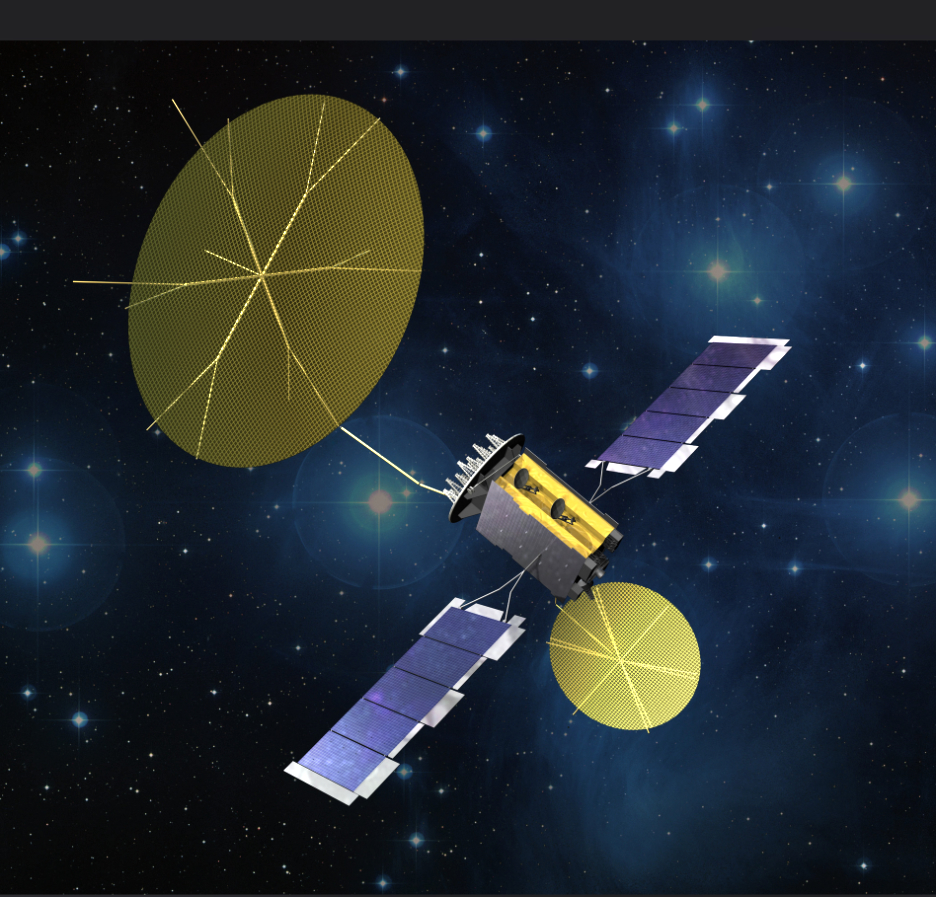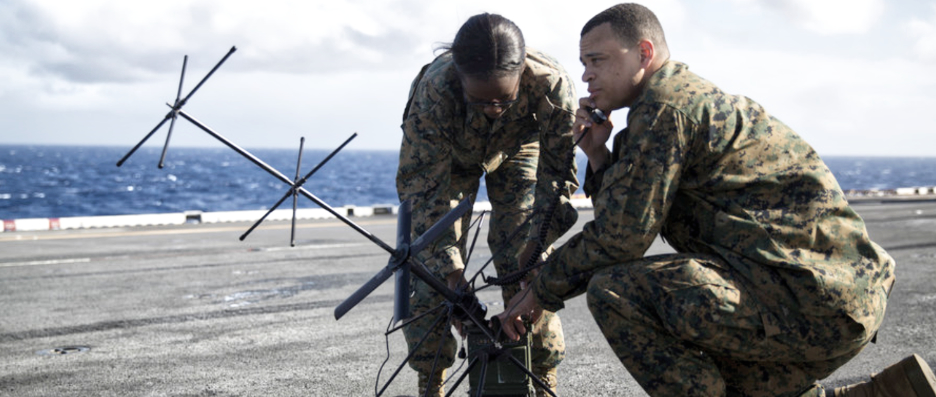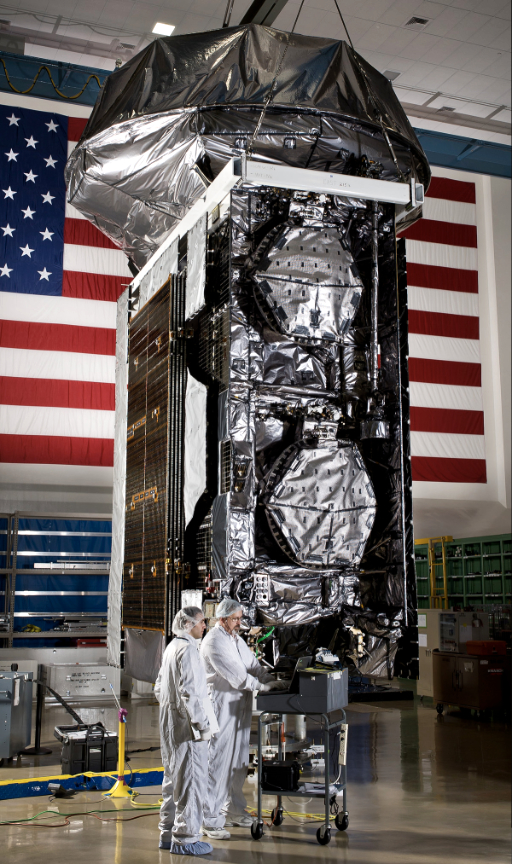
Artistic rendition of a U.S. Navy Mobile User Objective System (MUOS) satellite in space. Image is courtesy of Lockheed Martin.
The U.S. Marine Corps Systems Command (MCSC) is updating their tactical satellite system that provides increased communication on the battlefield — based on field user evaluations, the upgraded technology is performing beyond expectations.
The Mobile User Objective System (MUOS) is a next-generation, narrowband satellite communication capability that enables Marines to connect to SATCOM networks. It encompasses updated firmware to the AN/PRC-117G radio system and one of three antenna kits that help users simultaneously access these networks.
Initially fielded in March of 2019, the system enables mobile or stationary Marines to leverage cellular technology to increase access to voice and data communication. It also improves overall reliability in urban environments.
Lt. Col. Jeff Decker, MCSC’s Ground Radios product manager, said that MUOS gives the USMC a 3G capability using satellite constellations,. It is similar to a cell phone capability in the sky that covers the entire globe, adding that the 3G networks used with MUOS remain far superior to the Marine Corps’ legacy SATCOM channels. Decker noted that the Ground Radios program office continues to monitor the latest technologies and looks toward working with other services for future incremental improvements to the capability. He stated MCSC is looking to support the warfighter with a lethal and sustainable capability, which is the command’s focus. The more robust and resilient the capability, the more we can start adding on back-end systems to help Marines. MUOS is changing the way the USMC looks at a tactical satellite architecture.

From March to May 2020, MCSC conducted various field user evaluations with I Marine Expeditionary Force at Twentynine Palms, California, to assess an updated version of MUOS that increases network stability while executing missions. During the testing, Marines participated in fire support simulation exercises where they employed MUOS for coordinated air strikes and mortar support. They also used the technology during scenario-based exercises that involved rehearsing command and control operations.
Decker noted that the system was tested through user evaluation exercises to understand what the capability can do on paper as well as how it can be uses to increase lethality and provide redundancy across the [Fleet Marine Forces].
The testing enabled users to grow familiar with the system, ask questions and provide feedback. It allowed MCSC to learn more about MUOS, including the system’s strengths and limitations. Leveraging Marine feedback, the program office can make additional updates to MUOS as needed.
Eddie Young, project officer of Multiband Radio II Family of Systems at MCSC, said the testing helped the Ground Radios Team assess MUOS in combat-operational environments, which will better prepare them to employ the system during real missions and noted MCSC wanted to bring in these units and make sure the system is working as it should to ensure the warfighter’s needs are met.
Both Decker and Young said the feedback on the updated MUOS from Marines has been overwhelmingly positive, and that the system has exceeded performance expectations. Decker noted how Marines commended the new waveform for its lack of performance gaps, its adaptability and the absence of any technical difficulties while testing.
Decker commented that the Marines showed no frustration while trying to execute point-to-point calls while employing MUOS in an operational environment. The system is doing what we expect it to do, and that is exciting.”
Sgt. Mason J. Roy, video chief for Communication Strategy and Operations at I MEF, participated in the communication exercises. He raved about the benefits of the exercises in training Marines for future missions that involve MUOS employment. He related that he believes the exercises went really well. The idea that a video or photo can be sent from the field to a command post [using MUOS] shows the Marines can rapidly inform commanders with visual information in order that commands could potentially adjust battlespaces to promote mission accomplishment and protect our troops.
The program office will begin fielding the updated version of MUOS this summer.

The fully-integrated MUOS satellite stands vertical in Lockheed Martin’s Sunnyvale, California, facility.
Photo is courtesy of Lockheed Martin.

